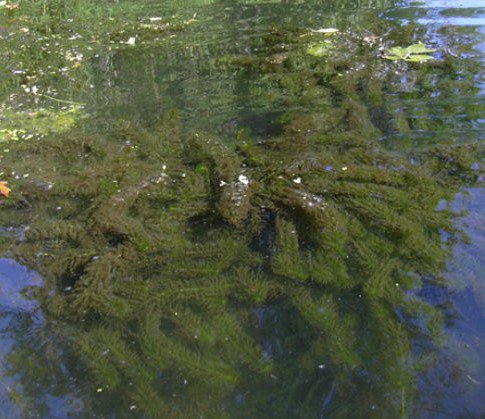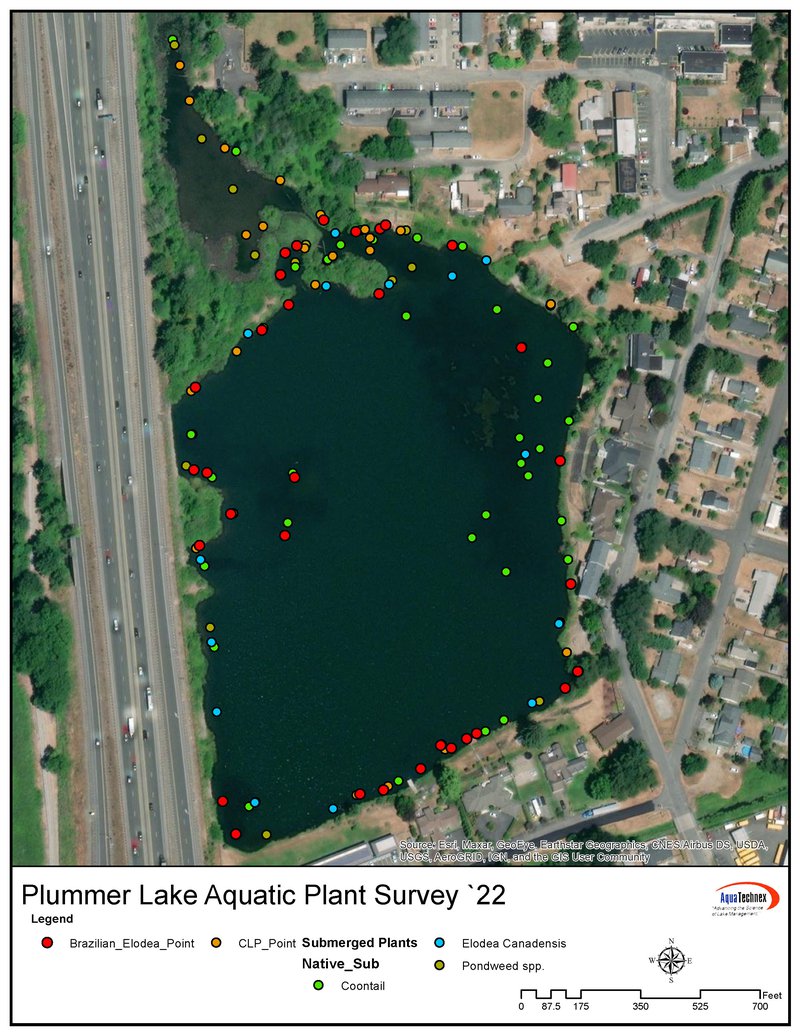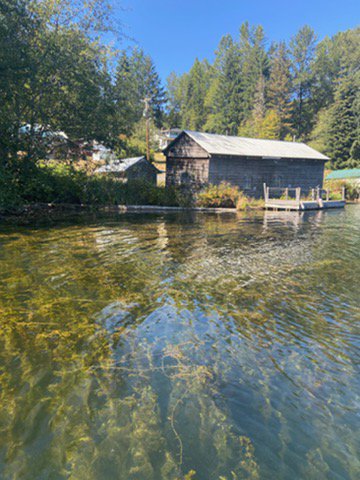Lakes - Aquatic Weed Treatments
Aquatic weeds pose a variety of risks, including flooding, habitat degradation, impeding water flow, decreasing recreational opportunities, and much more. Often forgotten about and less visually obvious to most people, aquatic weeds are frequently going under the radar. It is important for the public to be aware of the presence of aquatic weeds in the water bodies they visit and take measures to prevent their spread!
The PlayCleanGo campaign provides excellent information on necessary precautions and procedures that should be taken by all, in order to reduce the spread of aquatic noxious weeds. Stop Aquatic Hitchhikers also offers a variety of resources on how you can help stop the spread of these aquatic noxious weeds.
Chehalis River & Plummer Lake Brazilian Elodea

Brazilian elodea is being managed at Plummer Lake, in Centralia, WA. The infestation most likely originated from the disposal of an aquarium at the small waterbody, and has since grown to be recognized as the point source of the infestation in the entire upper Chehalis river basin. The management goal is total eradication of the plant within the lake, and control strategies have been adaptive over the years but so far failed to do more than reduce the extent of the infestation for longer than a growing season. Ongoing work with aquatic noxious weed specialists is being conducted to determine the best course of action going forward. This year, 2022, a professional, in-depth, bio survey was conducted and a the formation of a treatment plan, to be implemented next year, is underway.
Funding for the project has historically come from the Washington State Department of Ecology, and an application is currently underway with that agency to do so again.

Mineral Lake Water Milfoil Management

An infestation of Eurasian watermilfoil, a Washington State class B aquatic noxious weed, was discovered at Mineral Lake in Mineral, WA, in the fall of 2020. Due to the fact that the infestation was discovered early on, Lewis County Noxious Weed Control staff were able to apply for an Early Infestation Aquatic Invasive Plant Management Grant from Washington State Department Ecology. With a 25% match in funds from Lewis County Noxious Weed Control, the Eurasian watermilfoil control work will be paid for by this Department of Ecology grant, which is paid for with funds generated from the sale of boat trailer registration tabs.
Following a thorough application and review process, including a period of public comment, the Lewis County Noxious Weed Control Board was granted coverage under the Washington State Department of Ecology Aquatic Plant and Algae Management General Permit WAG994515 to treat Mineral Lake with an aquatic herbicide. This treatment was conducted on Tuesday, August 31, 2021. The herbicide used was ProcellaCOR EC (Florpyrauxifen-benzyl), a selective aquatic herbicide that has been used very successfully to treat Eurasian watermilfoil in other locations in Washington State. The federal Environmental Protection Agency and the Washington State Department of Agriculture have both approved this chemical as a reduced risk aquatic herbicide. ProcellaCOR has no restrictions on recreation, fishing, or potable water use. There is no bioaccumulation of this herbicide in fish and other aquatic organisms, which makes the fish harvested safe for consumption. There is, however, a 24 Hour irrigation restriction for landscapes, crops, and pastures.
Lewis County Noxious Weed Control contracted a survey to be done summer of 2022 to determine the effectiveness of the 2021 treatment and determine if a second treatment is necessary. Eurasian watermilfoil was found in two locations along the western littoral zone. A small follow-up treatment was done around those two locations this year.

